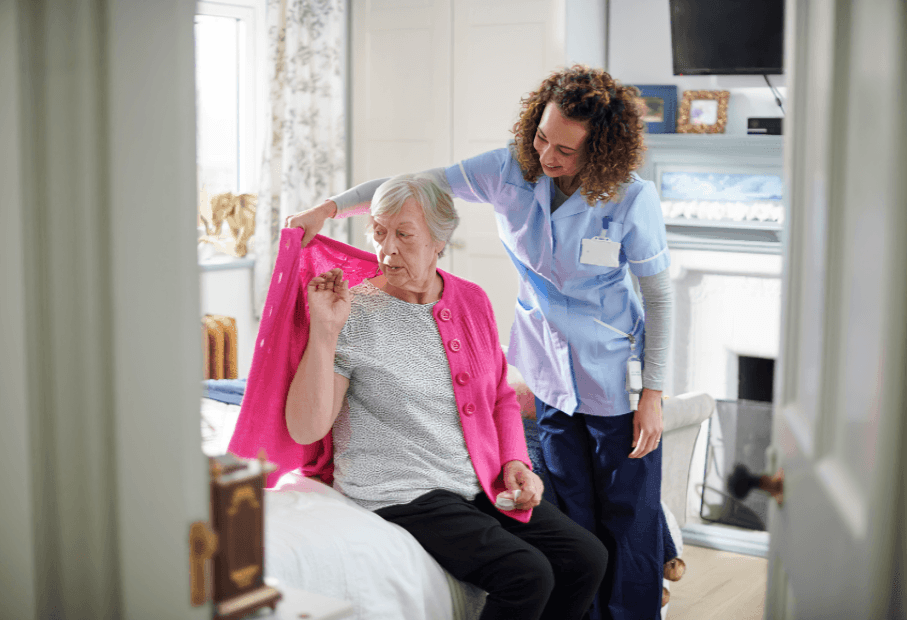
“
Understanding geriatric rehabilitation & therapy is crucial in supporting aging individuals as they navigate physical, cognitive, and emotional changes. By focusing on improving strength, balance, mobility, and confidence, geriatric rehabilitation ensures seniors lead dignified and fulfilling lives. 1
1
”
Geriatric rehabilitation often begins after a serious event like a stroke, fall, or surgery. It helps rebuild strength and independence, preventing long-term immobility or reliance on others for daily activities. 1
Physical therapy in geriatric care focuses on gentle strength training, walking, and stretching exercises that improve joint flexibility, helping seniors maintain mobility and reduce the risk of falls. 2

Occupational therapy assists older adults in adapting to physical limitations by teaching safer ways to carry out daily tasks like dressing, bathing, or cooking, improving independence and dignity.
Cognitive therapy is integrated into geriatric rehab for those with memory loss or early dementia. Techniques stimulate brain activity, helping maintain mental clarity and slowing cognitive decline. 3
Falls are a major risk for seniors, often leading to disability. Rehabilitation focuses on fall-prevention strategies such as balance exercises, footwear assessment, and home safety modifications. 4
Speech therapy is often a component of geriatric rehab, especially after strokes. It helps restore communication skills and swallowing ability, which are critical for safety and social connection. 5
Therapists in geriatric care assess not only physical issues but also nutrition, sleep, medication use, and lifestyle factors that can affect recovery speed and long-term well-being. 6
Geriatric rehab plans are highly personalized. Doctors and therapists tailor sessions to the senior’s specific condition, pace, and goals—there’s no one-size-fits-all in this field. 7
Family involvement is key in geriatric rehabilitation. Loved ones are often trained to support exercises, assist in mobility, and encourage independence without taking over essential tasks. 8

Joint replacement recovery—especially hip and knee replacements—is a common focus. Therapy helps patients regain walking ability, flexibility, and daily function after these procedures.
Many older adults with arthritis benefit from aquatic therapy, which reduces pressure on joints and allows easier movement while reducing pain and inflammation naturally through water resistance. 9
Recovery speed in geriatric rehab depends on both physical and mental attitude. Seniors who are hopeful and actively engaged often show faster, more sustainable improvements. 10
Pain management is part of therapy, with non-drug approaches like massage, heat/cold therapy, and targeted exercises reducing discomfort in muscles and joints during recovery. 11
Geriatric rehabilitation also plays a role in managing chronic conditions like Parkinson’s or osteoporosis by preserving muscle tone, preventing falls, and supporting smoother motor function. 12
Therapists monitor progress closely and adapt programs based on improvements or setbacks, ensuring that rehabilitation goals evolve with the patient’s real-time capabilities and confidence. 13

Technology in rehab has advanced, including motion-tracking, virtual reality exercises, and robotic devices that help seniors regain movement in engaging, safe, and motivating ways.
Seniors recovering from cancer treatment often need rehabilitation to manage fatigue, rebuild strength, and overcome physical limitations caused by chemotherapy or radiation side effects. 14
Geriatric rehab supports palliative care, focusing not just on recovery but also on comfort, dignity, and quality of life for those with terminal or irreversible conditions. 15
Nutrition and hydration are emphasized during rehab, as muscle repair and cognitive function depend on good intake. Therapists often work alongside dietitians to support this. 16
Physician-philosopher Galen believed aging well relied on preserving physical ability and mental sharpness—ideas now central to understanding geriatric rehabilitation & therapy in the modern age.17


